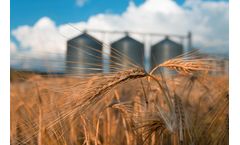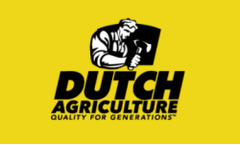Cereal Crop Articles & Analysis
31 articles found
The market is segmented into fertilizers, pesticides, adjuvants, and plant growth regulators, with key applications in crop-based and non-crop-based sectors. Market Overview Market Size for 2024: The agrochemicals market is projected to reach USD 253.29 billion. ...
These systems can transport water directly to plant roots and reduce the risk of evaporation, thereby minimizing the waste of water resources. Crop protection and pest control: Plastics play a key role in crop protection through the manufacture of plastic mulches and covers. ...
During drought or dry conditions, salinity and pH levels can change quickly in the soil. While the forecast shouldn’t entirely dictate how you manage your farm, understanding and performing the best farming practices when adding seed-placed nutrients can help save your yields when the rain fails to ...
Storage of cereal crops and other foodstuffs is an essential part of ensuring a sustainable and robust food supply. Cereal crops are typically harvested between mid-July to mid-September but with careful storage can be kept for periods longer than a year.1 Successful storage of cereals involves the balance of a ...
Keith Melnyk of V33 Farms has been farming with his dad John, and brother Wayne, for approximately 30 years. Together, they run a 3,000 acre farm in Alberta’s Peace Country, east of Manning, where they grow canola, wheat, peas, oats and some forage grasses for ...
CALL FOR PAPERS Introduction Rice (Oryza sativa L.) is an important cereal crop and nearly more than half the population of the world subsists on it. ...
Snow might still be on the ground, but it’s never too early to think about the year ahead. Many producers have their crop plans already in place. Last fall’s early snow means spring fertilizing is on the radar for a lot of farmers. ...
Crops such as sugar beet, wheat, rye, barley, and cotton are considered to be salt tolerant, yet even their growth will be affected if salinity is more than 1O dS/m Cereal crops are the most susceptible to salt stress, with effects seen in vegetative and early reproductive phases. ...
Already in spring, drones can be used in the field to help answer important questions: How was the establishment of winter crops and how has the winter affected the crops? Where do I need to reduce or increase the seed rate next time? ...
BySolvi AB
Cool-Season Crops In this project, the UC Davis researchers looked at two cool-season oilseed crops: canola and camelina, plants in the mustard family. ...
Rice and wheat are major cereal crops in Nepal. Climate change impacts are widespread and farmers in developing countries like Nepal are among the most vulnerable. A study was carried out to assess the impact of climate change on yield and irrigation water requirement of these cereal crops in Bhaktapur, Nepal. Laboratory and ...
“We decided to drop oilseed rape completely from our rotation in an attempt to reduce slug populations in the cereal crops." Working closely with Thames Water, Mr Cath also took the decision to move to a ferric phosphate slug pellet two years ago and he hasn't looked back. ...
As Pakistan is currently facing a severe shortage of irrigation water, this paper analyzes the determinants of water scarcity and its impact on the yield of cereal crops (wheat, maize and rice), household income, food security and poverty levels by employing the propensity-score-matching approach. ...
The cost of fertilisers and its increase is particularly high for farms specialised in cereal, oilseed and protein crops, and accounted for 13.9% of agricultural production in 2009.Keywords: price volatility, fertiliser prices, European Union, fertilisation costs, sustainable agriculture, Farm Accountancy Data Network, mineral fertilisers, nitrogen fertilisers, ...
” It is a startlingly far cry, Perls says, from crossbreeding crops over decades and centuries, and “ultimately letting nature figure out how those crops are going to ...
ByEnsia
Or will solutions to food insecurity be found in deeper structural, political and social change? Cereals just don’t cut it Over 2.3 billion tonnes of cereals are produced every year, according to the FAO. ...
This paper outlines an automatic computer vision system for the detection and differential spraying of Avena sterilis, a noxious weed growing in cereal crops. With such purpose we have designed a multiple hybrid decision making system based on four different simple classifiers: Bayes, fuzzy k-means (FkM), support vector machines (SVM) and Hebbian learning. ...
The deliberate planting of fast-growing N2–fixing legume monoculture species in rotation with cereal crops can be an important source of N for soil fertility replenishment. We hypothesized that mixed-species fallows have a higher potential of giving long-term residual benefits in terms of biomass, nutrients, and quality of residuals leading to long-term nutrient ...
Cropping systems in the dryland farming region of eastern Washington State are dominated by winter and spring wheat (Triticum aestivum L.) and spring barley (Hordeum vulgare L.). Excessive levels of residue may be an obstacle in the adoption of conservation farming systems. Decomposition of cereal crop residues is associated with fiber and ...
Weed growth in winter cover crops in warm climates may contribute to weed management costs in subsequent crops. A 2-yr experiment was conducted on an organic vegetable farm in Salinas, California, to determine the impact of seeding rate and planting arrangement on rye (Secale cereale L. ‘Merced’) cover crop growth and weed ...















